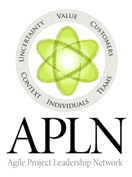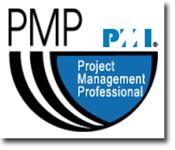 Okay… it has been a while since my last installment in this series. Aside from my general inability to stay focused on a single topic (what was I thinking committing to a nine part series) I got really swamped preparing for Agile 2008. I've got two talks coming up in November on this material, one of which has a presentation due in early September, so I guess it is time to get busy and get this series wrapped up.
Okay… it has been a while since my last installment in this series. Aside from my general inability to stay focused on a single topic (what was I thinking committing to a nine part series) I got really swamped preparing for Agile 2008. I've got two talks coming up in November on this material, one of which has a presentation due in early September, so I guess it is time to get busy and get this series wrapped up.
Last time we covered Communications Management, in this post we'll discuss Quality Management.
As always, let's start with the PMI definition of Quality Management. According to PMI, Project Quality Management includes all the activities of the performing organization to determine quality policies, objectives, and responsibilities so that the project will satisfy the needs for which it was undertaken. There are three processes included in this knowledge area: quality planning, perform quality assurance, and perform quality control.
If you've been following this series, you'll know that my general approach with the PMI is to take guidance from the PMBOK and figure out how to satisfy the intent of the process with a more agile practice or principle. Agile is all over quality planning, quality assurance, and quality control but we often use different language to describe how we satisfy these objectives and we often plan for these activities in a pretty different way.
Let's see what we can do to bridge the gap...
Quality Planning
PMI Definition: Identifying which quality standards are relevant to the project and determining how to satisfy them
Quality planning is really about the initial set of assumptions (we make as an agile team) about how we are going to manage quality on our projects. As it relates to developing software, quality planning has mostly been done for us… it is implicit… it is understood by virtue of the fact that we are using an agile methodology.
When we have discussions about doing test driven development, pair programming, or continuous integration; we are making decisions about how we are going to handle quality. The decision to make use of acceptance criteria is simply a decision on how we will know we have met the requirements of our stakeholders.
Are we going to do unit testing? How about manual regression? Will we need to test for performance, scalability, or security? How will we know we have met any applicable regulatory or audit requirements? I would venture to say that most agile teams are having these conversations. Even if your team is not writing this stuff down or getting sign-off, you are implicitly developing your quality plan.
It is up to the team to balance how much of this needs to be documented. Ask yourself to what degree will a document facilitate understanding or help with stakeholder communication? Consider how much documentation is required by your organization. Keep things simple, minimally prescriptive, and make provisions to adapt your plan as you learn more about the emerging solution.
Perform Quality Assurance
PMI Definition: Applying the planned, systematic quality activities to ensure that the project employs all processes needed to meet the requirements
You've made some initial decisions about how your team will meet the quality expectations of the organization… now it is time to execute. Quality assurance is about making sure we are building the right product from the very beginning.
Early in the iteration, we meet as a team with our customers to define exactly what is to be built. Every role on the project has the opportunity and is encouraged to be involved. There are people looking at the requirements from every conceivable angle: system architecture, development, QA, analysis and design, and usability. We explore the problem from all perspectives, before we set off writing code, to ensure we are building a complete product.
Once we get started building out the features, we immediately execute our testing plans. At a minimum, agile teams are writing unit tests and doing continuous integration. We know at every moment of the project how well the code is performing against the requirements.
If your team has dedicated QA members, the QA folks are testing right along with the development team. Sometimes it is more exploratory and we are not looking for sign-off, we are really looking for feedback. Feedback from the QA team is essential to making sure that the product is evolving according to the quality standards we agreed to at the beginning of the iteration.
The team holds itself accountable by meeting in a daily standup. This allows the team to stay plugged in, assess progress, and identify impediments. In addition, the team has constant access to the product owners. This constant visibility allows the customer to fine tune the solution, as it is being built, to ensure that the product will meet market requirements.
Perform Quality Control
PMI Definition: Monitoring the specific project results to determine whether they comply with relevant quality standards and identifying ways to eliminate causes of unsatisfactory performance.
Even though quality is the focus from the very beginning in an agile project, we still seek to validate outcomes and formally track the quality of the product we are building.
The advantage of automated testing is that we know the health of the product in real time. We are able to measure and track defects and get them resolved as soon as they are introduced into the build. Manual testing, in parallel with the automated testing, gives a more intuitive way to exercise aspects of the code the are difficult to automate.
As a project manager I am constantly tracking burndown at the project level to see how well the team is doing against the backlog. Within the iteration, I am tracking task progress to make sure that we can deliver on our commitments. Agile teams also track defects, defect status, and test trends. All this gives the team a way to continuously control the project quality.
Agile teams don't wait until the end of the project to test, when we have the least amount of time to actually fix a problem, or respond to a change. We know at all times the health of the project, if the team is burning hot, if defects counts are trending up or down, how well we are resolving issues, and if those issues are becoming impediments to getting new product built.
Agile teams review features with their customer as they are completed. They do formal product demonstrations and retrospectives at the end of every iteration. These processes allow the team to control, not only the quality of the emerging product, but also of the processes we are using to deliver that product.
All of this feedback gets folded back into the plan, adjustments are made, and the team adapts based on what they have learned from regularly delivering code.
Next up… Procurement and Human Resources. We'll save Risk Management and Integration Management for last!
 Subscribe to this blog
Subscribe to this blog
 Subscribe to Leading Agile
Subscribe to Leading Agile
 Early bird rates expire on August 31st. After the 31st, the price of the conference goes from $399 to $599. The conference is an exceptional value at $399 so make sure to register this week to take advantage of the early bird pricing!
Early bird rates expire on August 31st. After the 31st, the price of the conference goes from $399 to $599. The conference is an exceptional value at $399 so make sure to register this week to take advantage of the early bird pricing!















